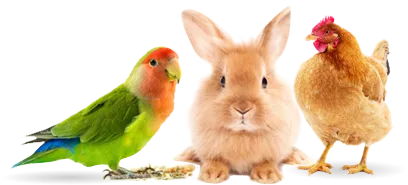Conures are vibrant, intelligent parrots that make wonderful pets, but a screaming conure can quickly become a challenge for any owner. If your 15-year-old conure shrieks incessantly, especially when left alone, you’re not alone—many conure owners face this issue. These vocalizations stem from their wild instincts, where loud calls help them communicate across distances in flocks. Understanding why your screaming conure acts this way is the first step to positive change. In this guide, we’ll explore proven strategies based on expert avian behavior advice to help quiet your bird humanely and effectively.
 Bird community in a natural setting
Bird community in a natural setting
Why Do Conures Scream? Understanding the Behavior
Conures, like green-cheeked conures or sun conures, are not domesticated like dogs; they retain strong flock-oriented instincts even if captive-bred. Screaming often serves as a contact call to locate mates or flock members in the wild, where it must carry over long distances amid jungle noise. In captivity, this translates to shrieking when the bird feels isolated or bored.
Common triggers for a screaming conure include:
- Lack of interaction: Birds confined to cages without out-of-cage time crave social stimulation.
- Attention-seeking: Responding to screams reinforces the behavior, teaching the bird that noise equals attention.
- Environmental stress: Sudden changes, like a new cage or home, can heighten anxiety, even if the setup is ideal with toys, pools, and secure spots.
- Health issues: Underlying problems like nutritional deficiencies or illness can amplify vocalizations—always rule these out with a vet visit.
Veterinarians and avian behaviorists emphasize that punishment fails with parrots, as it increases stress. Instead, focus on their natural needs for mental and physical enrichment.
Building the Right Environment for Your Conure
A spacious cage is a great start, as you’ve provided with toys, a bathing pool, and the original cage for security. When relocating your conure to a living area, this social hub can reduce isolation screams. Position the cage in a high-traffic family room, away from drafts, direct sunlight, or kitchen fumes, but visible to household activity.
Enhance the setup:
- Foraging toys: Encourage natural behaviors to combat boredom.
- Daily out-of-cage time: 2-4 hours supervised play fosters bonding.
- Routine schedule: Consistent feeding, play, and sleep mimics flock life.
These changes alone can curb screaming in many conures, but combine them with training for lasting results.
Training Your Screaming Conure with Positive Reinforcement
The key to stopping conure screaming is ignoring unwanted noise while rewarding calm behavior. This retrains instincts over time—expect weeks or months of consistency.
Step-by-step guide:
- Ignore screams completely: Walk away or cover the cage partially (never fully, to avoid stress). No eye contact or talking.
- Reward quiet moments: When silent or mimicking speech, offer treats like millet spray, praise, or head scratches immediately.
- Teach alternative behaviors: Use clicker training for tricks like “step up” or whistle responses. Start sessions short (5-10 minutes) daily.
- Desensitize to alone time: Gradually increase quiet periods with background sounds like soft music or parrot chatter recordings.
For species-specific insights, green-cheek conures are particularly vocal but respond well to these methods. Avian experts like those at Lafeber Company note that one slip—giving attention during a scream—resets progress, so patience is crucial.
If screams persist, consult an avian veterinarian to check for pain, hormonal issues, or dietary gaps. A balanced diet with pellets, fresh veggies, and limited seeds supports vocal health.
 Illustration of birds and pets for newsletter subscription
Illustration of birds and pets for newsletter subscription
Long-Term Success and Prevention Tips
Once progress shows, maintain gains by varying toys weekly and rotating play areas. Socialize your conure with family members, but avoid overwhelming stimuli. Track behaviors in a journal to spot patterns.
Real owner experiences echo this: One adopter of an older conure saw screams drop 80% after three months of ignoring and rewarding. Resources like Lafeber’s behavior webinars provide deeper dives into parrot psychology.
Conclusion: Quiet Your Conure with Consistency
Stopping a screaming conure requires understanding their wild roots and committing to positive reinforcement—ignore noise, reward calm, and enrich their world. With your thoughtful cage upgrades and home relocation, you’re on the right path. Consult a certified avian behaviorist or vet for personalized advice, ensuring a happy, harmonious life for your feathered friend.
For more on conure care, explore Lafeber’s pet bird resources or subscribe to their newsletter for expert tips.
References
- Lafeber Company: Pet Bird and Parrot Behavior
- Lafeber Company: Teaching Your Bird
- Avian Welfare Coalition guidelines on parrot training (general best practices).
(Word count: 728)
